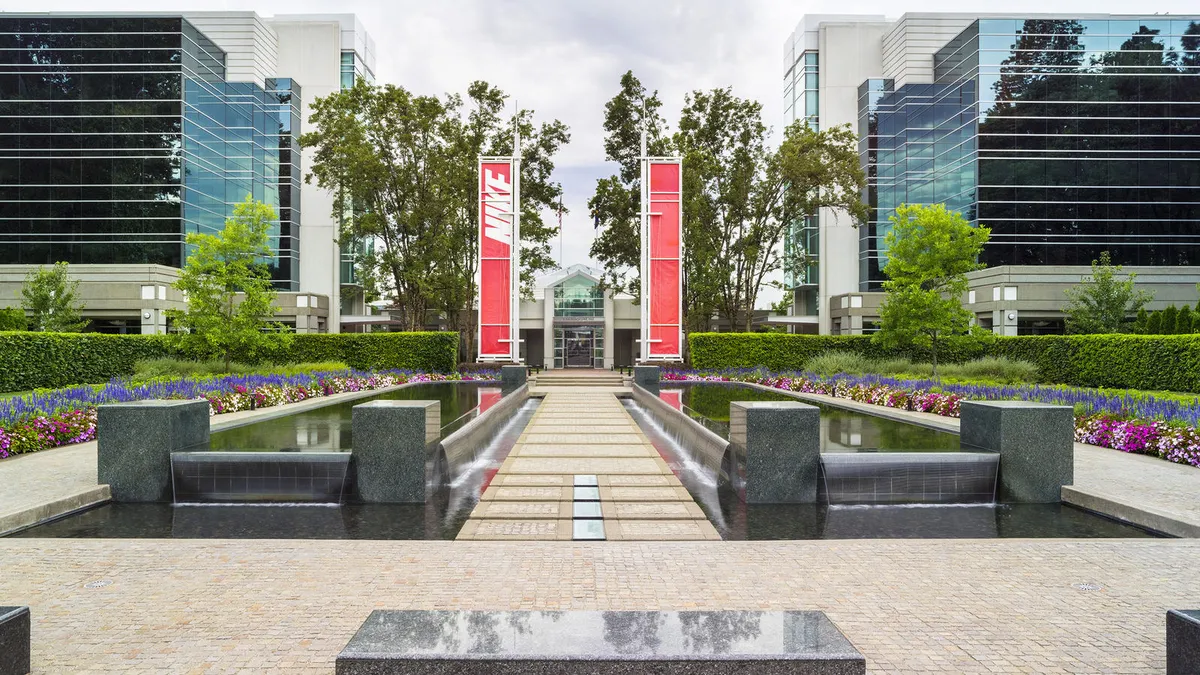As Amazon retools its retail operations to grow its marketplace and shrink its first party operations, several analysts have refreshed their perspective on its share of the market.
The new takes spring, uncharacteristically, from revelations by CEO Jeff Bezos himself. In his April 11 letter to shareholders, Bezos released key metrics not usually shared by the e-commerce giant, including that the percentage of sales by third-party sellers rose from 3% in 1999 and 30% in 2008 to 58% in 2018. "The compound annual growth rate for our first-party business in that time period is 25%," he also wrote of the 1999-2018 timeline. "But in that same time, third-party sales have grown from $0.1 billion to $160 billion — a compound annual growth rate of 52%."
Researchers at eMarketer took that information and lowered their estimate of Amazon's share of U.S. digital commerce in the second quarter this year to 37.7% from their first-quarter estimate of 47%, according to data the e-commerce research firm provided to Retail Dive via email.
"It's important to note that Amazon, for the first time ever, released information on third party sales share in CEO Jeff Bezos' annual shareholder letter," an eMarketer spokesperson told Retail Dive in an email. "As a result of this new information, eMarketer was able to update a key input into our ecommerce sales model for Amazon that had the effect of lowering our previous estimates for Amazon's sales and market share. Importantly, this information was not provided on any exclusive basis to eMarketer and we learned about it via the shareholder letter at the same time as everyone else."
Indeed, Instinet analyst Simeon Siegel, days after Bezos' letter, similarly noted that the missive suggests that Amazon's "perceived retail reach may be overly optimistic" and that "[Amazon's Gross Merchandise Value is] overestimated historically as well," according to an April 15 client note emailed to Retail Dive, in which he also noted that Bezos pegged fiscal year physical gross merchandise sales of $277 billon, "a whopping ~54% (or ~$150bn) below the Street's estimated $427bn GMV."
The adjustments hardly mean that Amazon overall is ceding much. In a June 7 report, the 11th in their series "Amazon & The Retail Rainforest," for example, Wells Fargo analysts led by Senior Analyst Ike Boruchow noted that "traditional retailers have decelerated significantly YTD in 2019 (our softlines group is once again comping negative), but e-commerce trends remain robust and [Amazon] continues to grow rapidly," per the report, which was emailed to Retail Dive.
Amazon accounted for 40% of retail growth in the first quarter this year, they also said, noting that its U.S. GMV (across all categories, excluding Whole Foods) was $45 billion in the quarter — a $7 billion or 19% increase year over year. "Given that Amazon's addressable market (as we define it) grew by less than $18 billion, this means that [it] accounted for 40% of the market's sales growth in 1Q19 (2nd consecutive quarter of ~40% share of dollar growth)," according to their report. "Amazon is still gaining customers (and they're visiting more frequently)."
The shifts noted by eMarketer, Instinet and others have little to do with changing customer behavior and more to do with Amazon itself actively moving much of its focus to its Marketplace, where it can collect fees for warehousing, fulfillment and shipping without taking on inventory risk. The company recently seemed to take further steps in that direction, amid reports that it's finding ways to move some wholesale suppliers onto the Marketplace to instead sell directly to Amazon customers.
In fact, while Amazon, outside of its own Whole Foods, Amazon Go and other stores and its "1p" site, may be less of a retailer at this point than many imagine, that only holds upsides for the company and its investors, according to Siegel.
"3P growth is simply one of the many high margin segments of [Amazon's] business outpacing its 1P growth, propelling margin expansion as [it] becomes more fee collector than product seller," he wrote, also saying, "Ironically, since being smaller suggests further room for growth, we view this downward recalibration as a positive."
In addition to boosting margins and simplifying operations, the shift could also help blunt emerging criticism from some lawmakers and advocates that Amazon, along with Facebook and Google, is too large, he also said.
"Recognizing [Amazon] normally releases a lot of #s but little insight, this help with a key metric seems to suggest, as far as [Amazon] is concerned, a perception of less is more," according to Siegel. "In addition to greater runway, an image of a smaller-than-perceived entity is preferable in light of ‘break-up-big- tech' conversations. Mr. Bezos stressed that [Amazon] is a 'small player' in global retail."
As analysts ponder what Amazon's new approach to retail means for the company, its sellers and its rivals, it's worth noting how little of the wider retail world the company really controls. While its share of U.S. e-commerce may reach 37.7% this quarter by eMarketer's measure, its share of retail sales overall will hit just 4%, according to that report.
In fact, the 10 retailers enjoying the highest penetration of digital sales in the U.S., (which are, in order, in addition to number-one Amazon, eBay, Apple, Walmart, The Home Depot, Best Buy, Qurate Retail Group, Macy's, Costco and Wayfair), together occupy an estimated 6.5%, according to eMarketer's current forecast.






















